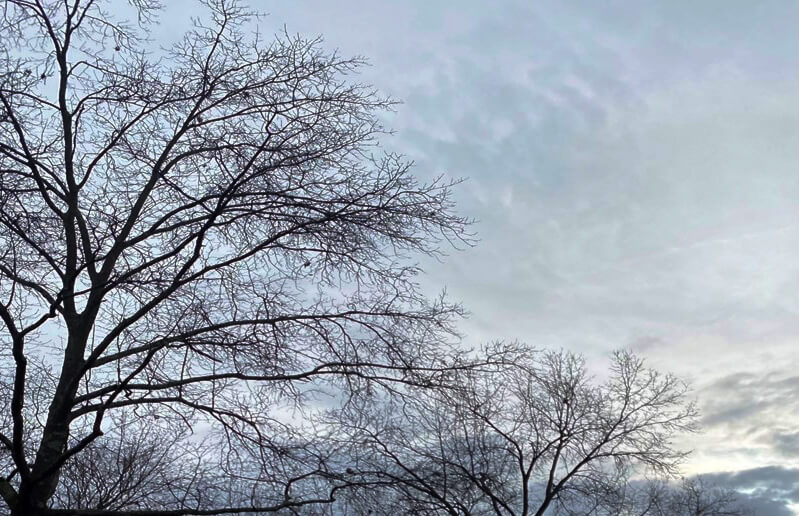SAD or Seasonal Affective Disorder is something that impacts approximately 10 million people each winter (https://www.bu.edu/articles/2019/seasonal-affective-disorder/) in the United States and is more prevalent in women than men. SAD is a form of depression that usually occurs in most people at the same time each year and it is mostly associated with winter weather when sun light is limited, triggering a chemical reaction in your brain causing feelings of depression.
Although most cases of SAD are only temporary (https://www.psychiatry.org/patients-families/depression/seasonal-affective-disorder) , say a few months, the feeling of sadness and depression that results can be very debilitating and possibly dangerous. These feelings include hopelessness, guilt, having less interest in things you usually find fun, sleeping too much or having trouble sleeping straight through the night, eating too much resulting in weight gain, having trouble concentrating and in extreme cases, having suicidal thoughts. Also, even though SAD is almost always temporary, not knowing when these feeling will dissipate or IF they will end, makes these feelings even more painful.
What are the causes of SAD?
The specific cause of SAD remains unknown. However, most experts agree that reduced levels of sunlight contribute to the following, causing winter depression:
- Circadian Rhythm Disruption – The reduced level of sunlight in fall and winter disrupts your body’s internal clock and leads to feelings of depression.
- Serotonin levels – Serotonin, also known as the happy chemical, is a neurotransmitter that is sometimes reduced in the winter, affecting mood, sleep, digestion, etc.
- Melatonin levels – Melatonin is a hormone that is produced in response to darkness and helps regulate your sleeping pattern, but in the winter the lack of sunlight disrupts the balance of the body’s level of melatonin, which plays a role in sleep patterns and mood.
Risk factors
Seasonal affective disorder is diagnosed more often in women than in men and it occurs more frequently in younger adults than in older adults, although it certainly can affect anyone, of any age (https://my.clevelandclinic.org/health/diseases/9293-seasonal-depression)
Here are some factors that may increase your risk of seasonal affective disorder:
- It runs in your family –People with SAD may be more likely to have blood relatives with SAD or another form of depression.
- Experiencing depression or bipolar disorder –Symptoms of SAD, such as depression may worsen seasonally if you already suffer from one of these conditions.
- Living far away from the equator –SAD appears to be more common among people who live far north or south of the equator, which is probably why this condition is most likely caused by decreased sunlight during the winter.
- Low level of vitamin D –Most vitamin D is produced in the skin when it’s exposed to sunlight and because there is less sunlight in the winter you may not be getting enough vitamin D from foods/supplements, this may result in low levels of vitamin D in the body. Also, vitamin D can help to boost serotonin activity, which as we discussed earlier may contribute to SAD.
How to Prevent SAD –
While there’s no known way to completely prevent the development of seasonal affective disorder, there are steps you can take to help manage the symptoms and hopefully prevent them from getting worse over time. Here is a list to help you
- Spend as much time outside, during the day as possible – You can usually absorb all of the vitamin D you need in about ½ hour outside in the sun, but in the cold winter months, that can be difficult. Do you best to force yourself to go outside in the winter, even if it isn’t sunny. A brisk, ½ hour walk will make a big difference.
- Get a light box – Spending a half-hour in front of a light box, preferably when you first wake up, will help to mimic the exposure you are not getting from being outside in the sun. This therapy may take a week or two to work, but results from various studies show its very effective.
- Exercise – We all tend to stray from our exercise routine in the winter. Mostly because its too darn cold to go outside, but try your best, even if you have to exercise inside. Only 30 minutes per day is all it takes to make you feel better mentally and make you look better physically.
- Take a vacation – Even its only for a few days, try your best to get away on a vacation, especially if you can spend some time in the warm sun.
- Supplement your diet – We already discussed the need for vitamin D, so if you cant get outside enough, try supplementing with at least 1500iu of vitamin D daily and possibly more if needed (https://www.everydayhealth.com/depression/can-vitamin-d-help-treat-depression/). Also, recent studies show how CBD can affect serotonin levels and help you relax and sleep better, so taking this cannabinoid may be helpful.
- Therapy and medication – If your symptoms get serious and you’re having trouble getting through the day, contact a medical professional. There are medications, such as anti-depressants and therapy that can help you.
Remember, SAD is almost always temporary, so keep telling yourself that you will eventually feel “normal” again. Obviously, if you have the opportunity to spend your winters in a warmer climate, take advantage. However, for most people, this is not an option so try some or all of the suggestions mentioned previously to help you feel better until the snow melts away and the sun shines again.






